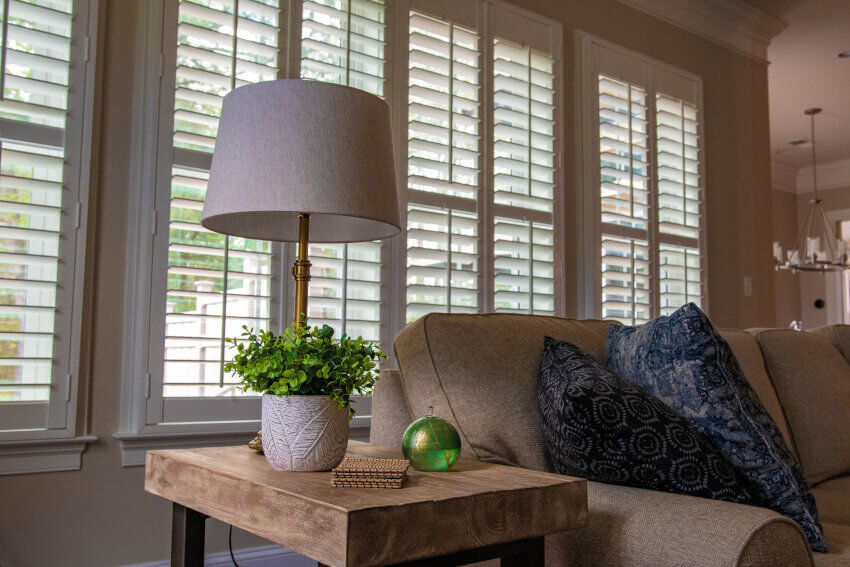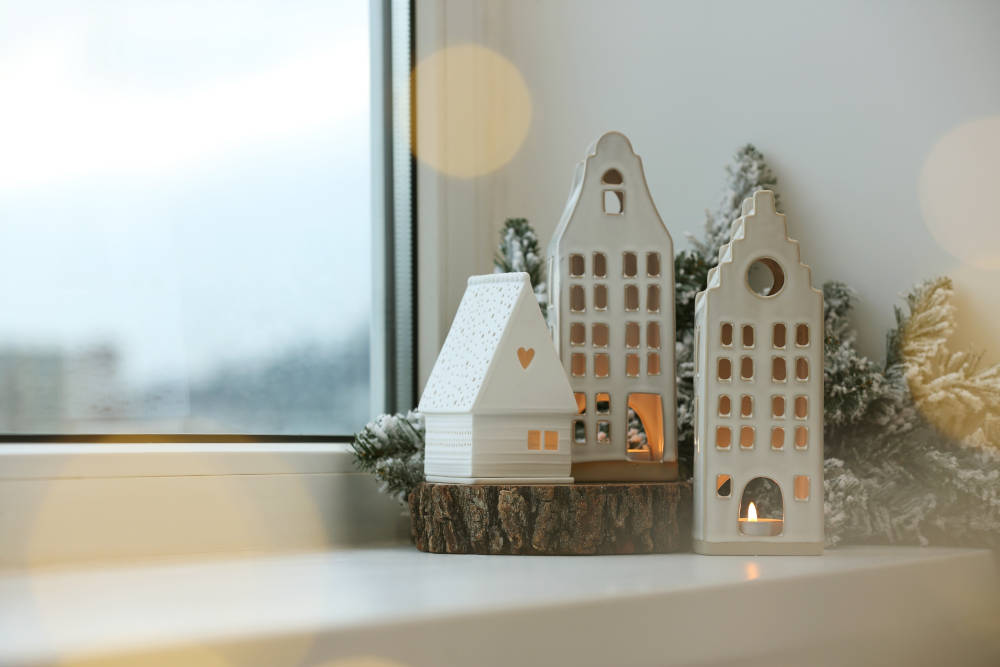Are you trying to keep your central heating temperature as low as possible in a bid to reduce your monthly outgoings? Perhaps you’re simply wanting to do your bit in saving the planet? Whatever your reason is, if you are keen to increase the heat levels at home but are not so keen on turning up the central heating thermostat, the handy tips below on how to heat a room economically are just what you need.
Reverse the direction of your ceiling fan to create an updraft
It turns out that a ceiling fan is not just beneficial for hot, humid weather, they can be beneficial during chilly weather too. We recently read on Goodhousekeeping.com that by reversing the motor in winter so it spins clockwise, the fan will create an updraft. This pushes warm air near the ceiling back down. It is a useful hack that will help you feel warmer for longer, resulting in you being able to lower the thermostat – some say you could reduce your bill by as much as 10%. So, if you have a ceiling fan, make sure you use it in the winter too.
Use draught stoppers
When you are going to tons of effort to try and keep the heat in a room, the last thing you want is to allow chilly air to seep through the crack under your door. By running a draught excluder along the bottom of doors, you’ll be able to seal off any cold air entering a room and trap the warmer air in. Fear not, if you think the old-fashioned snake-shaped designs are outdated, there are lots of funky, modern alternatives on the market now. You can easily make a draught excluder into a great talking point in your room.
Invest in suitable blankets or thermal throws
If you are wanting to improve the heat gain in a bedroom, then it is worth investing in some down-filled blankets to trap heat under the covers. An electric blanket is a great option too, just ensure you use it safely! Most importantly, never leave the blanket unattended when it’s not in use (opt for one that has an automatic shut-off feature in case you are prone to forgetting to turn it off).
In a living room, you might want to consider a thermal throw. These seem to be increasingly popular among households of late because, unlike an electric blanket that goes on your bed, heated throws are designed to be snuggled under on the sofa or wrappedaround you while you are working on your laptop/completing homework/reading a book. The cost of running these heated textiles is as little as 3-5p per hour, which is very economical compared with the cost of keeping your central heating on for hours, or heating rooms you’re not actually using.
Check your windows for draughts
Even one tiny crack can allow lots of heat to escape and chilly draughts to enter a room. Dig out your torch and thoroughly inspect your window frames and seals. If you notice cracks, caulk the area to seal them as soon as you can. Otherwise, the money you have budgeted for energy bills will literally be flying out the window each month!
Consider more energy efficient window dressings
Installing shutters within your home will add an extra insulative barrier to your windows to help prevent both heat escaping the room via the window, as well as prevent chilly air entering a room from the outside.
To be clear, wooden window shutters can reduce heat loss via windows by up to 64% when compared with the reduction of heat loss achieved by roller blinds and curtains. Therefore, over the lifetime of your shutters, the initial outlay in cost may be recouped by your reduced energy bills. If budget is tight, our Antigua range of affordable shutters may be of interest to you. Plus, our 5-year, 0% finance payment plan will help spread out the cost.
Don’t just take our word for it though, read our customer’s views on the topic.
Block draughts from electric outlets
You don’t tend to think of your outlets and light switches as a place where your heat can escape, but it can. If you remove the face plates on all the exterior outlets in your home, you are likely to feel cold air on your hands. These areas are nothing more than holes in your walls filled with wires, meaning that in winter, they present a source of cold air entering your home through those small gaps.
Placing some outlet insulators over the electrical outlets in your home can be effective. They are simply foam sheets with cut outs in the shape of either a lighting switch or an outlet and you put them behind the face plate to keep the chilly air at bay. For a small cost outlay, you could notice a significant difference.
Hopefully, implementing one or all of these tips will help you stay snug and improve your day-to-day comfort during the winter. Plus, you will be one step closer to a more energy efficient household.






